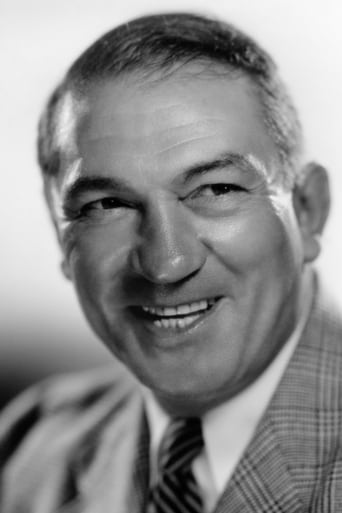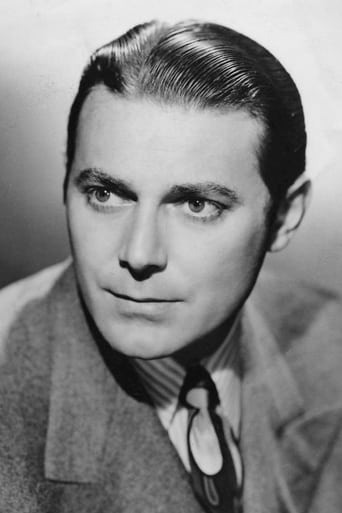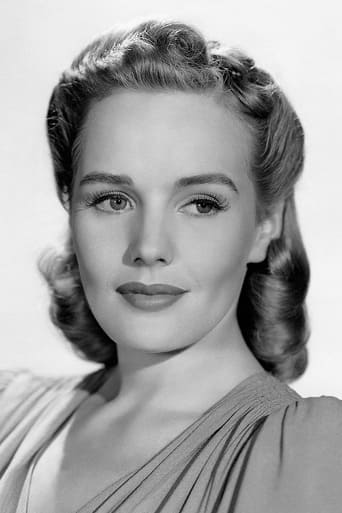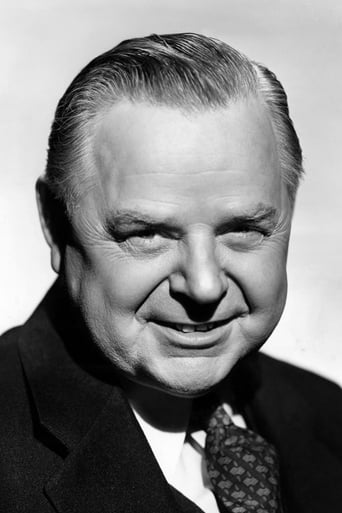lugonian
SOUTH OF PAGO PAGO (United Artists, 1940), an Edward Small Presentation, directed by Alfred E. Green, is a South Seas adventure tale starring Victor McLaglen, Jon Hall and Frances Farmer in the leads. As much as this movie might have started a trend of other South Seas adventures that were common ground during the 1940s, with many produced in lavish Technicolor, this is not the first of this cycle. In 1937 alone, Jon Hall got his first big break in a leading role opposite sarong girl Dorothy Lamour in THE HURRICANE (Samuel Goldwyn) while Frances Farmer was featured in a Technicolor adventure of EBB TIDE (Paramount), based on the novel by Robert Louis Stevenson. Three years later, their paths would meet for this black and white adventure tale with enough island scenery that might have been more effective had it been produced in Technicolor.Opening title: "This is a story of days not so long ago, when Singapore spawned a race of steel-fisted, iron-jawed adventurers, who lived happy, fought hard and died hard - as they ravaged unknown seas, lured by the priceless lusture of virgin pearls." Opening in Shanghai, China, at the Tingle Tangle Café, hostess Ruby Taylor (Frances Farmer) meets with Portuguese sailor, Manuel Forro (Abner Biberman) with news about rich pearl beds that can be found off the shores of Manoa. This news reaches Ruby's friends, Captain Bucko Larson (Victor McLaglen) and his first mate, Williams (Douglass Dumbrille), who invite both Ruby and Manuel aboard their steamer, the L.A. Dessa, bound for the island south of Pago Pago. Before reaching Manoa, Manuel, who's upset about being cheated of his promised share, is thrown overboard to the sharks by Bucko. Greeted by the natives, the crew is met by Kehase (Jon Hall), son of the island chief (Pedro De Cordoba). Although loved by Malia (Olympe Branda) since childhood, Kehase takes an immediate interest in Ruby, a beautiful white woman. Also on the island is Mr. Lindsay (Gene Lockhart), a white man who's been living among the natives for nine years, is not please by the presence by these visitors, which may mean trouble for his happy paradise. His instincts are correct. As the native boys dive for pearls, danger lurks for some, leading to certain deaths or injuries. Kehase insists the pearl diving must stop. Not wanting to leave the island with just twelve pearls to their name, Bucko uses Ruby to lure Kehase away, even to a point of marrying him and honeymooning on the island of Tua Tua. With Kehase temporarily out of the way, Bucko and his mates resume their greedy force amongst the native boys, risking their lives diving for more pearls and turning a once happy community into a fearful one. Also seen in the cast are: Francis Ford (Foster); Ben Weldon (Grimes); and Harry Woods (Black Mike Rafferty).A South Seas tale that plays like a Saturday afternoon matinee is one that has done no harm in Jon Hall's movie career, considering a handful of similar adventures that would follow later on, especially those six over at Universal opposite the exotic Maria Montez. Hall does well as the island leader, but his accented manner of talking fails to come off convincingly. Aside from native drum playing and dancing, shipboard fights pearl diving dangers, the movie also contains off-screen chanting and singing to the title tune of "South of Pago Pago" by Chet Forrest, Bob Wright and Frank Loesser to round out the story. When Frances Farmer makes her first screen entrance in the cafe, her character, clothes and hairstyle strongly resemble that of her Lotta character from her breakthrough film, COME AND GET IT (1936). Once the story shifts towards the island of Manoa, she not only lets her hair down, figuratively, she appears slightly heavier in her physical appearance than before. Olympe Bradna, on loan from Paramount, makes a beautiful island girl. She even participates in a lively island dance with Jon Hall.Not as well known as other films of this type, SOUTH OF PAGO PAGO did become available on VHS through VCI Home Video around 1998, and later onto DVD, assuring its rediscovery. Though cable television broadcasts are uncertain, it was once popular viewing on the late show or afternoon broadcasts during the 1960s and 1970s before taken out or circulation. Overlooking certain outdoor scenes that appear more indoor studio bound, with ordinary scripting, SOUTH OF PAGO PAGO moves swiftly during its 97 minutes of action and adventure. (*** pearls)
leew-7
Edward Small took director Alfred E. Green's cast and crew - an uncommonly attractive and brilliant assemblage - to the south seas to do the majority of this curiously undersung piece on location. Far less stylized/dated than Goldwyn's THE HURRICANE, it is admittedly riddled with cliches and formula, but packaged in such visual and technical excellence it scarcely matters.There are scenes that will stop the heart. Chiseled adonis Jon Hall and porcelain idol Frances Farmer outlined in profile(s) against the steaming background volcano take the romantic closeup to a level that defies comparison.Edward Small's films typically were strings of frames any one of which was an individual work of art in itself. What can one say but that with this one he outdid even himself, as did workhorse composer Edward Ward on song and score, some years prior to his work on Universal's stunning PHANTOM OF THE OPERA?



